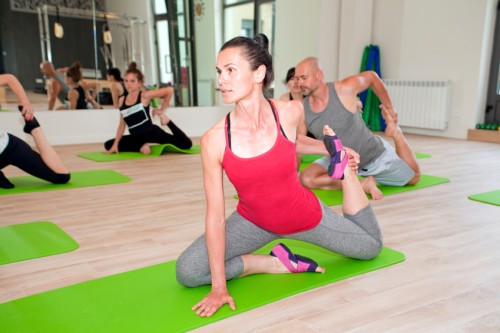
Feeling satisfied with your workout in general, but not quite developing the range of motion you’d like to match your newfound athleticism? Strength and stamina are, of course, the foundation for anything you want to do—even just living a healthy life—but keeping a fuller flexibility and maximizing your range of motion, while less ‘exciting’ is nearly important for all endeavors. So the next time you’re working out, take these seven tips for developing your range of motion into account:
Warm ups before your workouts. You shouldn’t be stretching before workouts, but you should be doing light warmup exercises intended to get your body relaxed and ready. Loose, primed muscles move easier, giving you an improved range of motion—the reduced risk of injury isn’t half bad as a benefit, either.
 Keep your stress down. Stress forms knots and keeps muscles tense, the absolute last thing you want to deal with when a full range of motion is your goal. While it’s not always possible to control all of life’s little curveballs, you should make relaxing and keeping a healthy mindset a priority—for your physical health as well as your mental. Don’t be afraid to try herbal teas, aromatherapy, anything to help you clear the noise from your head before you exercise.
Keep your stress down. Stress forms knots and keeps muscles tense, the absolute last thing you want to deal with when a full range of motion is your goal. While it’s not always possible to control all of life’s little curveballs, you should make relaxing and keeping a healthy mindset a priority—for your physical health as well as your mental. Don’t be afraid to try herbal teas, aromatherapy, anything to help you clear the noise from your head before you exercise.
Keep hydrated. Not getting enough water can cause cramps and a wealth of other health problems, which in turn will restrict your motion. Furthermore, you’re more likely to injure yourself testing the limits of your range of motion if you’re dehydrated, so don’t get too exploratory unless you know you’ve had plenty to drink.
Push exercise motions to your limit. Of course, once you get started on your exercises, you need to actually flex and push the limits of what your body can do. Don’t overdo it—you’re not looking to strain, sprain, or tear anything. Just push yourself a little past comfortable, and take every motion to its fullest depths; squats below parallel, etc. If you artificially restrain your movements during exercise, your body is going to learn to develop around those limitations and minimize your flexibility.
Breathe correctly. Improper breathing technique can greatly limit your motion, especially when you’re under strain and breathing heavily. You want to focus on moving your diaphragm and filling and emptying your lungs—your ribcage doesn’t and shouldn’t move much for this, even taking full, deep breaths.
Deep tissue massages. Deep tissue massages are a great follow-up to exercise for a host of reasons, range of motion issues included. If you can’t or don’t want to invest in having someone else massage you, you can always get similar results with a massage tool—or even a rigorously applied tennis ball, for the budget-conscious.
Post-workout stretches. Stretching before workouts is a bad idea—but a follow-up stretch routine is one of the best ways to improve your motion, so make sure you plan one and keep up with it after you’ve finished the rest of your exercise plan. It might also help you recover faster and relieve post-workout muscle pain, so there’s plenty of other reasons to consider stretching.


